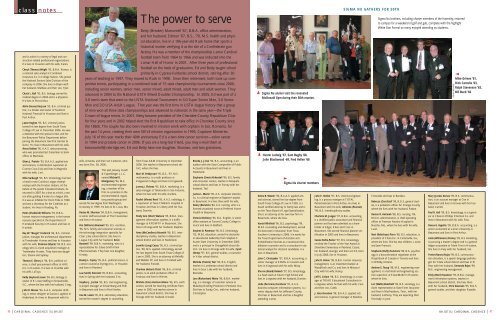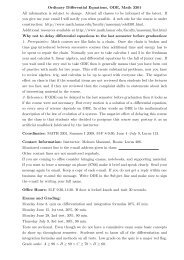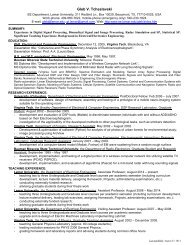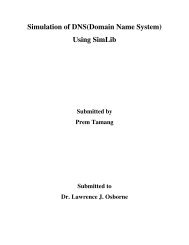A cultural affinity - Lamar University
A cultural affinity - Lamar University
A cultural affinity - Lamar University
Create successful ePaper yourself
Turn your PDF publications into a flip-book with our unique Google optimized e-Paper software.
TREASURED<br />
TEETH:<br />
DENTAL DISCOVERY<br />
YIELDS NEW SPECIES<br />
by Brian Sattler<br />
CHRIS BEARD, JIM WESTGATE, DANA COPE<br />
Something old is now something new, thanks to researcher<br />
Jim Westgate and colleagues. The scientists’ research has led<br />
to the discovery of new genera and species of primates,<br />
long vanished from the earth but preserved in the fossil record.<br />
Westgate is a professor of earth and space sciences at <strong>Lamar</strong><br />
and a research associate in the Vertebrate Paleontology<br />
Laboratory, Texas Natural Science Center, the <strong>University</strong> of<br />
Texas-Austin. He and his research colleagues, Dana Cope, professor<br />
of anthropology, College of Charleston, and Chris Beard,<br />
curator, Vertebrate Paleontology Section, Carnegie Museum of<br />
Natural History, announced their discovery at the annual meeting<br />
of the American Association of<br />
Physical Anthropologists in<br />
Philadelphia, Pa., March 29.<br />
Molar, pre-molar and incisor teeth<br />
from the new primate genus and three<br />
other new primate species were recovered<br />
from 42 million-year-old tropical,<br />
mangrove palm swamp deposits of the<br />
Eocene-age Laredo Formation exposed<br />
in Lake Casa Blanca International State<br />
Park in Laredo.<br />
Statistical and morphological<br />
analyses of the 50 primate specimens<br />
from the site indicate that there are<br />
three new primate genera in the fauna<br />
and a fourth primate species may be a<br />
new species of the genus Ourayia,<br />
Westgate said.<br />
The presence of a previously unrecognized<br />
and diverse primate community<br />
on the Texas coast during late middle<br />
Eocene time is significant because, at<br />
that time, primate diversity in the northern<br />
interior of North America had<br />
diminished greatly as a result of global<br />
climatic cooling and uplifting of the<br />
Rocky Mountains, Westgate said. The<br />
tropical environment on the Texas coast appears to have allowed<br />
primates to thrive locally while their relatives in the continental<br />
interior faced near extinction.<br />
The team is preparing detailed manuscripts describing the<br />
new Omomyid primates. Three of the primate genera are<br />
tarsier-like omomyines. The fourth genus is still being studied<br />
to determine its primate affinities, Westgate said.<br />
The association of primate fossils with the skeletal remains of<br />
oysters, sharks, rays, giant aquatic snakes and crocodiles, along<br />
with mangrove palm fruits and pollen, indicates that the middle<br />
Eocene shoreline of the Gulf of Mexico lay 150 miles inland of its<br />
present position, Westgate said.<br />
One of the spoils of discovering a new species is the opportunity<br />
to give it a name. The formal name of the new genera,<br />
which means “primate of the coastal lagoons,” will be released at<br />
publication time, Westgate said.<br />
Omomyids (members of the extinct taxon Omomyidae)<br />
lived 34 to 50 million years ago during the Eocene Epoch and<br />
were one of two groups of known Eocene primates. The other,<br />
adapids, were more lemur-like. Fossils of these Eocene primates<br />
have been found in North America, Europe, Asia and Africa. The<br />
Eocene primates are the earliest known primates.<br />
Omomyids had large eye orbits, long grasping fingers and<br />
short snouts. They weighed around one kilogram, or close to two<br />
pounds, and were likely nocturnal, with<br />
large eyes for seeing better at night.<br />
Like most modern-day primates, the<br />
omomyids used their long fingers for<br />
climbing. They had small mouths, and<br />
it is likely that insects were a part of<br />
their regular diet.<br />
<strong>Lamar</strong> <strong>University</strong>, the <strong>University</strong><br />
of Texas Geology Foundation, the<br />
National Geographic Society and the<br />
Geological Society of America provided<br />
funds for field excavations in Laredo.<br />
A group of students will travel<br />
with Westgate to Utah in<br />
July to prospect late<br />
middle Eocene deposits<br />
of the Uinta Formation<br />
exposed in the Badlands of<br />
the Uinta Basin near Vernal for remains of primates and<br />
related species. A student anthropology team from the<br />
College of Charleston will join the group.<br />
Later that month, Westgate will travel to Cairnes,<br />
Australia, to present an overview of the Laredo fossil mangrove<br />
community at the International Congress for Quaternary<br />
Research. In October, Westgate, Cope and Beard will<br />
present their findings on the Laredo primate community<br />
at the annual international meeting of the Society of<br />
Vertebrate Paleontology in Austin.<br />
24 | CARDINAL CADENCE 35:2 MAY 2007 MAY 2007 35:2 CARDINAL CADENCE | 25

















